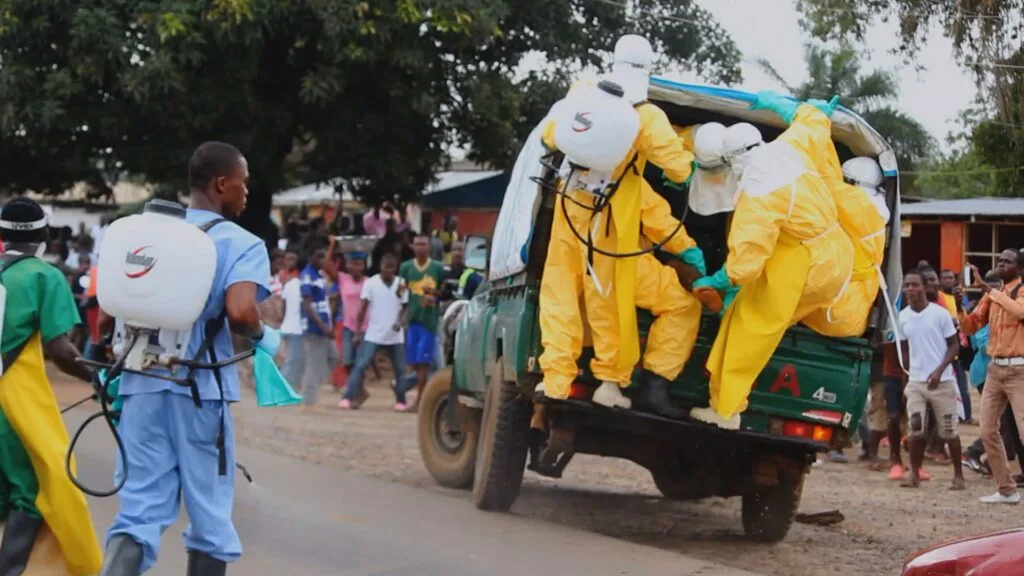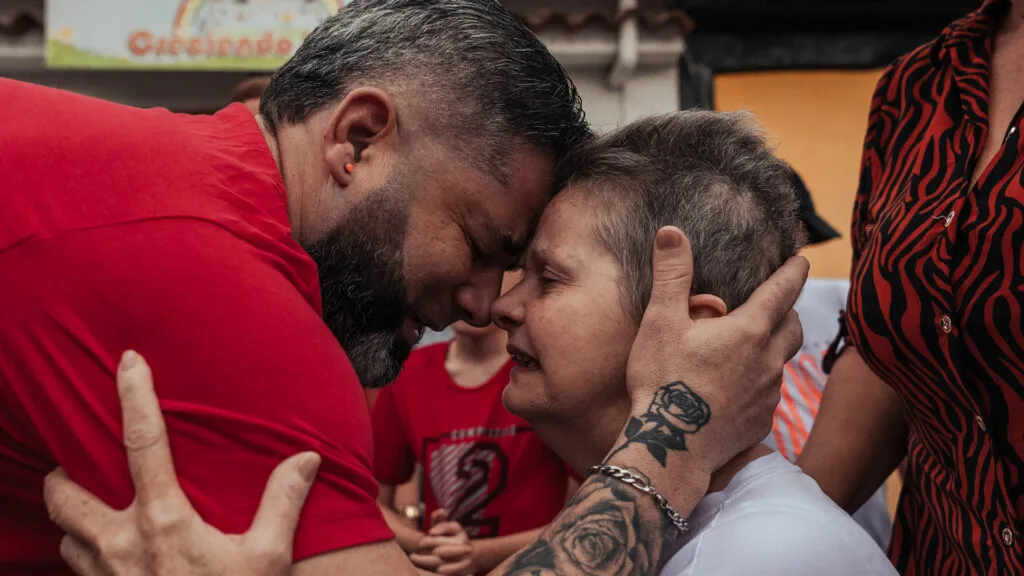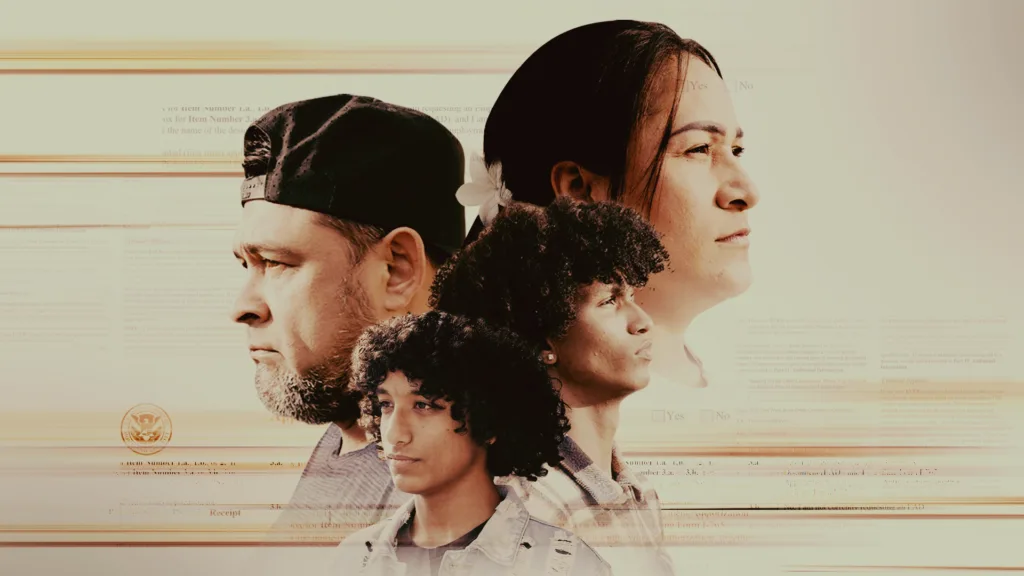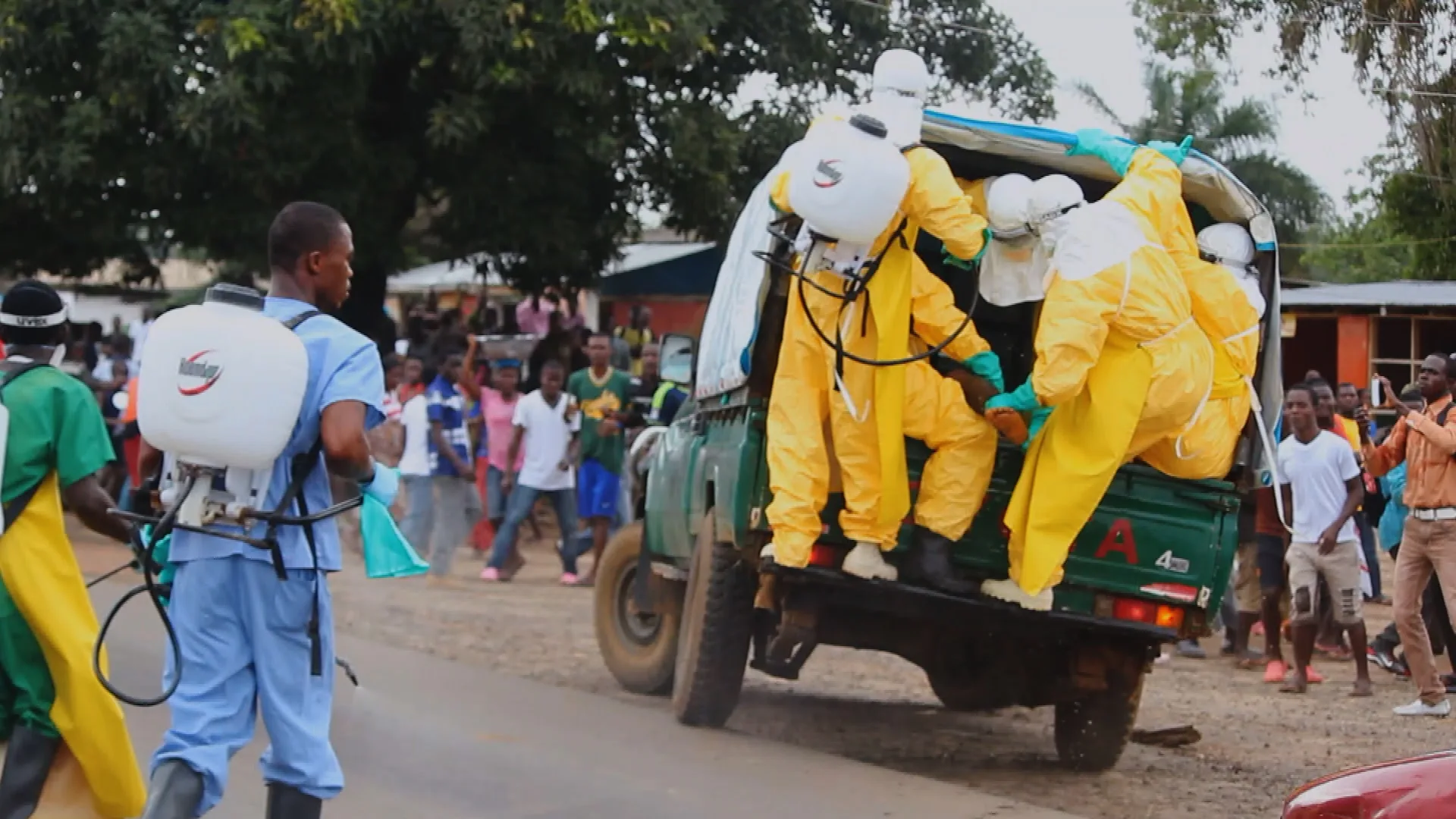Meet a Nurse Who Survived Ebola, then Went Back to the Outbreak
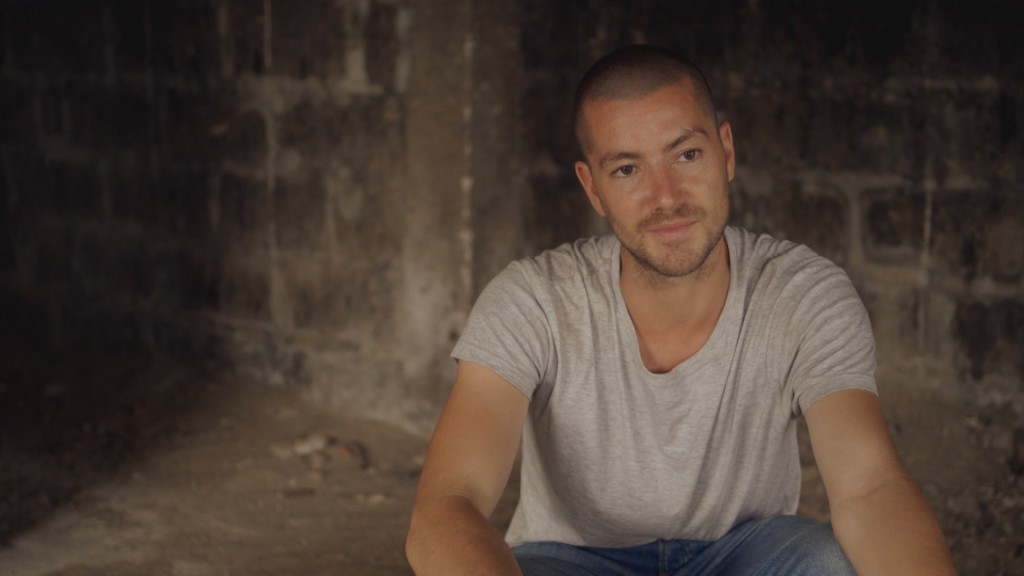
May 5, 2015
Share
Since the Ebola outbreak first struck West Africa in December 2013, at least 865 health workers have contracted the virus, and more than 500 have died. Will Pooley was nearly one of them.
When he contracted the virus last summer, Pooley, a British nurse, was volunteering at an Ebola treatment center in Sierra Leone nicknamed “the terror dome.”
In the mornings, Pooley remembers, one of his first jobs was to clear dead bodies from one of the center’s main annexes. “There might just be one corpse or there could be three or four,” he says. There was “quite a bit of blood around, and the floors would be quite dirty with bodily fluids … it just wasn’t a very pleasant place.”
Most patients died. So too did several of Pooley’s colleagues. But the work was too important to leave, says Pooley, and even if he wanted to, “I wouldn’t have been able to look myself in the eye.”
When he fell ill, though, the decision to return to England was made for him. Pooley left the city of Kenema and was flown to the Royal Free Hospital in London, where he was given the experimental treatment ZMapp. He soon recovered and quickly returned to Sierra Leone.
“I never wanted to leave in the first place,” he says.
FRONTLINE filmmaker Dan Edge spoke with Pooley on Jan. 22, 2015 about his time in West Africa, the moment he realized he was ill and why “so many lives would have been saved” had aid organizations moved in just weeks faster than they did.
On arriving in the middle of a catastrophe
When I got there, there was already a cohort of nurses inside as patients. Most of them were actually recovering, but a lot had already died. And then the big problem, the reason why they’d had this workshop to try and get some volunteers was because they were having trouble getting the staff, and for understandable reasons, to go into the unit and onto the ward to give care or to do all the things that need to be done — like transferring patients, taking blood — because they’d seen so many of their colleagues get sick.
“It seemed doubly bad in that staff were getting sick and that the sick people that were there were not getting cared for. It was pretty horrible.”And so it really brought care to a halt, which was a bit catastrophic when you’ve got people pouring in. … There were like 50 confirmed beds, and then sometimes up to 25 to 30 people, in the [suspected cases] ward as well. So all of those people, often a lot of them very sick, not getting much attention. So yeah, it seemed doubly bad in that staff were getting sick and that the sick people that were there were not getting cared for. It was pretty horrible. …
That first day I got on the ward, Galu, who was a real sort of figurehead nurse running the nursing side of the whole Ebola treatment center and isolation ward, she was obviously unwell herself. She hadn’t been tested yet. She was saying, “Oh, it’s malaria.” No one wanted to confront the truth, and she was getting some anti-malarial [treatment] intravenously in the nurses station. I think the day after that it sort of became evident, you know, she really needs to be tested. And then she was tested and isolated and she was positive.
She died about four or five days later … That was kind of the introduction of what sort of my first impressions were. A lot of people getting sick and a lot of people suffering.
What was it like inside the annex?
First thing in the morning, you go in the annex first. You go into [the] suspect ward before you go into a confirmed ward as that’s the flow — sort of low viral presence to higher, supposedly. But anyone going down to the annex will tell you the same, first thing in the morning, you’re a little bit nervous about what you might find.
It was nicknamed the “terror dome” by some people because during the night, probably no one, no nurses had been inside the annex, and the patients, some of them confused, a lot of them because they’re presenting so late and they’re so sick, there’s a lot of wandering, a lot of people dying. … There’s not much security at night so patients would have absconded during the night, those that were able. Those sick ones would often die during the night, and you might find them in the toilets as it was really common to — patients for some reason seemed to often go into the toilets to die.
And so that would be one of the first jobs in the morning, to bag and clear out the corpses from the annex. There might just be just one corpse or there could be three or four. We were doing IVs, intravenous fluids, on a lot of patients because we thought that was going to give them the best chance.
Sometimes it would go wrong and then they might in confusion pull lines or walk around bleeding, and these patients, if they do have a Ebola, then they bleed more and so there’s often quite a bit of blood around, and the floor’s would be quite dirty with bodily fluids. Yeah, it just wasn’t a very pleasant place, the annex.
What was happening to the dead bodies?
To start with, we didn’t have any kind of identification for patients, so we would try to label body bags when we could, but often we didn’t have names for the people that were dead. Sometimes it would just be a corpse [that] would arrive. You’ve got nothing. So the bodies, right until just before I left, it was the same. All the bodies went to this one place. Originally [it] might have [been] big enough to house the hospital’s or the unit’s corpses, but really you could only fit three bodies in there at a push.
And so what happened was that usually there’d be three or so corpses in there, and then as longer went between burial team visits, the corpses would pile up. And this was just outside the entrance to Ward A, so where patients would walk in and out. When a patient arrived, they’d walk in past these corpses that would be piling up across the path and sometimes next to the path.
And then they’d just pile up until the burial team came, and it could take sometimes up to like five days for the burial team to come and they’d start smelling quite bad. … But then, yeah, a lot of them were buried I think unidentified. I’m sure, loads of them.
Were there enough staff and resources?
No, the staffing problem was that people weren’t willing to go onto the wards. An equivalent unit now run by an international NGO probably has a few hundred staff; we had perhaps five or six people willing to go onto the ward, five or six health care workers that is. That’s not necessarily including the cleaners. …
Resources wise, there were no problems in the amounts of medications or PPE [personal protective equipment]. They were in plentiful supply. …
“Sick ones would often die during the night … patients for some reason seemed to often go into the toilets to die.”The other supplies issue was sort of basic materials for providing care, and that largely was completely absent. There wasn’t necessarily running water. You’d use bagged water, drinking water, to clean the patient but then once you’ve cleaned the patient you’ve got nothing to dry them with and the bed’s wet and they’re wet and you can’t dry them and then you’ve got no bed sheets and there’s no clothes to put the patients in.
When the food comes, it comes in buckets, but you’ve got no plates or cups and no one distributing the food. Well, there wouldn’t be enough food anyway. So there were just no materials. People would turn up really sick, in bloodied or soiled clothes and care wise, you just have to improvise. Just like washing people with drinking water and then pulling the curtains down to try and clean them up and then dressing them in improvised little garments, or taking clothes off dead patients — not off their bodies — but if a patient died and there was a bag of clothes that’s going to be incinerated, it’s better. It was sometimes just be taking materials from there just to try and use for other patients to clean them or to dress them if, you know, obviously if they were not contaminated.
Did you wonder where the cavalry was?
A little bit, yeah. I did wonder where the cavalry was, but the WHO [World Health Organization] were there and they had a small team. At any one time, they had three doctors working there and if it wasn’t for those doctors, many more lives would have been lost. They just [did] amazingly courageous work.
On working so closely with infected patients
I felt I was better protected than the local nurses because I thought my training was better, and I thought I had more fear, so I’d be more careful, and I thought I understood transmission better than they did, by and large. … So I really thought about my chances, but then after being there, maybe after three weeks there, just leaving wasn’t really an option anymore. … I wouldn’t have been able to look myself in the eye if I’d have left.
On realizing he might have Ebola
It was on Friday, about six weeks after I’d been working in the hospital. I woke up and I had a feverish night that had come on quite suddenly. I woke up feeling dizzy; my limbs were aching. I felt like I had really bad flu. I went into work, tried to work for the morning, and then was feeling really rubbish, and then I went to the WHO office and told Dr. Ian Crozier that I wasn’t feeling well and that I thought I needed testing. And so they drew my blood and I went home to isolate myself in my room and I went to sleep.
And that evening I was woken by Ian, wearing PPE. And so just seeing him come in, in PPE, it was enough for me to know the result was positive. By that point I was still feeling unwell but not terrible. I was able to drink, I could kind of force myself to eat a little bit, I was definitely fine with walking around and things. I wasn’t having any vomiting or diarrhea, and then over the next 36 hours before my evacuation, it was all just preparations for the evacuation. Lots of phone calls.
Leaving Sierra Leone
I was transferred by ambulance at 4:00 on Sunday morning to Lungi Airport, which was about a five-hour ambulance ride. They kindly put a mattress in the back of the ambulance for me, so it was quite comfortable. And then I waited around on the tarmac for an hour or so before they loaded me into the isolator tent, the mobile isolated tent. I was loaded in there by the wonderful RAF [Royal Air Force] nurses and doctors and some infectious diseases doctors from the Royal Free [Hospital], big clinical team. They loaded me onto the big C17 transporter plane, by maybe 1:00 in the afternoon and then it was a seven- or eight-hour flight in the isolator tent, sort of strapped into the middle of the transporter plane all the way back to London.
How he became infected
Almost anyone that gets Ebola can’t say for sure what their exposure was. It’s really hard to know. The onset can be two days or it can be 21 days … so it’s really hard to know how you got infected. But I believe my infection was most likely caused by my looking after of a baby that had tested negative and I looked after.
Tell us about the baby
I looked after it outside of the red zone, so I wasn’t wearing PPE. His mother had died, it then tested negative. … It had diarrhea, but it’s a bit harder to tell with a baby whether it’s like proper diarrhea. And so we isolated it and tested it and the baby was positive for Ebola. It was a week or so after we initially isolated the baby that I then got sick.
What happened when you got back to England?
I was taken into the Royal Free in Hampstead, and I was isolated in their isolator tent. I had quite a high temperature at that point, but I got a chance to see my family. I did feel reasonably confident, what with how good the care is there, and the experimental treatments that they’d gotten hold of, I felt reasonably confident.
“I was scared, that I was going to die; I was like, yeah, just give me the ZMapp because it’ll give me a better chance. It’s amazing what that imminent prospect of death can do for your altruism.”Twenty-four hours after my arrival, I think it was about 24 hours, they gave me the ZMapp, the experimental treatment ZMapp, and probably 24 hours after that I was feeling a lot better. My symptoms had progressed to some diarrhea — whether that was due to the virus or due to the antibiotics that they also give, I don’t know, and we don’t know for sure the ZMapp was the reason for my very speedy recovery, but it looks quite likely.
Did you feel conflicted at that point about the disparity between your care and the level of care for patients back in West Africa?
At that point probably not. No, I was thinking I was scared, that I was going to die. I was like, yeah, just give me the ZMapp because it’ll give me a better chance. It’s amazing what that imminent prospect of death can do for your altruism.
But then afterwards, once I recovered obviously, I had time to reflect on those differences. Knowing that shortly after I recovered, Nancy [Pooley’s friend and fellow aid worker] then died a horrible death. Yeah, it was really, really hard, because if she’d had had access to better care, then she might have survived, and she didn’t have that because she’s Sierra Leonean and she’s black. Yeah, it’ll never be right.
Why he returned to Sierra Leone
I came back because I never wanted to leave in the first place. This country is really great and the people here are incredibly friendly, and [if] probably anywhere in the world deserves better luck, then it’s this country. But also obviously at that time when I came back, they still needed lots of nurses and doctors to come out and help with the effort, and I had experience in the field and I had probable immunity, so it was a really decision to come back.
Obviously Doctors without Borders was very stretched across Guinea and Liberia, but did you feel that a kind of bespoke Ebola treatment center was needed in Kenema?
Yeah, instantly going into Kenema I think you’d have to be crazy to think that anything but shutting that place down would be the thing to do. What happened eventually was that Red Cross came and built a treatment unit outside of Kenema that has since taken over Ebola care.
It’s wonderful that they were able to do that and they’ve done a really good job. That should have happened like months before that and had that have happened months before that, there’s a whole cohort of nurses and lab techs and cleaners that wouldn’t have died, and all the patients that came in would have received better care.
If only that could have happened like two months or three months before, so many lives would have been saved, and it’s a tragedy that for whatever reason, the response was just so slow or the resources weren’t provided to people that could have done that. Perhaps [Doctors without Borders] could have set up a facility there if they’d been given the resources, or perhaps the encouragement to go there and set a place up, but just to leave a hospital suffering under that strain for so long, yeah, it’s really tragic.
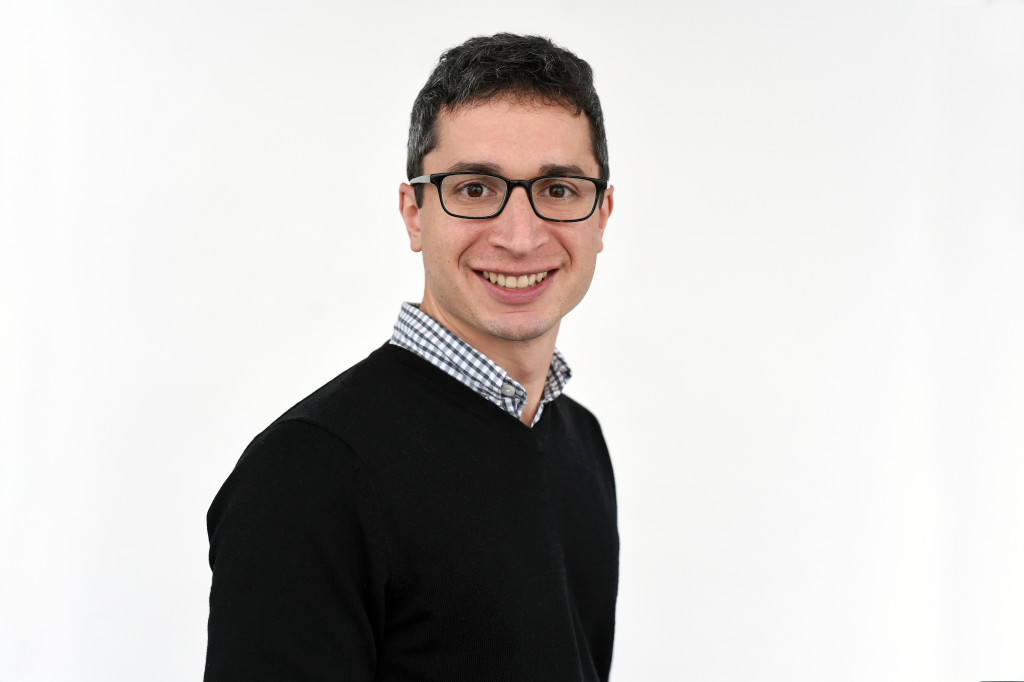
Related Documentaries
Latest Documentaries
Related Stories
Related Stories
Explore
Policies
Teacher Center
Funding for FRONTLINE is provided through the support of PBS viewers and by the Corporation for Public Broadcasting, with major support from Ford Foundation. Additional funding is provided the Abrams Foundation, Park Foundation, John D. and Catherine T. MacArthur Foundation, Heising-Simons Foundation, and the FRONTLINE Trust, with major support from Jon and Jo Ann Hagler on behalf of the Jon L. Hagler Foundation, and additional support from Koo and Patricia Yuen. FRONTLINE is a registered trademark of WGBH Educational Foundation. Web Site Copyright ©1995-2025 WGBH Educational Foundation. PBS is a 501(c)(3) not-for-profit organization.
